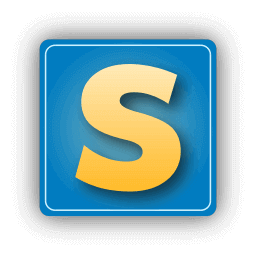
openSUSE is a free, Linux-based operating system designed for personal computers, laptops, and servers. It allows users to seamlessly surf the web, manage emails and photos, handle office tasks, and enjoy videos and music. Exploring openSUSE’s potential shows how AI tools and other advanced features empower users to create high-quality content in a thriving, community-driven platform.
Like most Linux distributions, openSUSE includes both a graphical user interface (GUI) and a powerful command-line interface (CLI) option. openSUSE installation gives users the flexibility to select a preferred GUI, with popular choices like KDE and GNOME, making it ideal for developers who want the most efficient Linux desktop environment for coding.
openSUSE supports both 32-bit and 64-bit system architectures and regularly provides new features and essential updates. Beyond its core functionality, this operating system integrates powerful third-party tools, such as SpiderOak for complimentary internet file synchronization and Rosegarden for free audio editing. This comprehensive approach provides users with a complete digital toolkit, making it easier to integrate open-source audio editing software for Linux distribution analysis.
Supports thousands of software packages spanning the entire open-source development spectrum. Includes improved indexing with Tracker, plus updates to Mozilla Firefox and Thunderbird.
openSUSE TOOLS
- Open Build Service (OBS). Our build tool generates packages for all our internal needs, as well as for a wide range of Linux distributions, including SUSE Linux Enterprise, Arch, Debian, Fedora, Scientific Linux, Red Hat Enterprise Linux (RHEL), CentOS, Ubuntu, and more.
- openQA. Automated testing for any operating system capable of reading the screen while controlling the test host as a user would.
- YaST. This tool offers a comprehensive suite for Linux system configuration and installation.
- Kiwi. Create Linux images for deployment on real hardware, virtualization, and now even container systems such as Docker. Kiwi is the engine that builds openSUSE release images.
The openSUSE project is a global community initiative sponsored by Novell that promotes the use of Linux worldwide. It creates one of the world’s best Linux distributions, working together in an open, transparent, and friendly manner as part of the worldwide Free and Open Source Software community.
The project is community-driven, relying on contributions from individuals who serve as testers, writers, translators, usability experts, artists, ambassadors, and developers. This project is a melting pot of innovation, encompassing diverse technologies and an inclusive community of individuals with varying expertise, linguistic capabilities, and cultural heritages.
The goals of the project are:
- Make this OS the most accessible Linux distribution for anyone to obtain and the most widely used open-source platform.
- Provide an environment for open-source collaboration. This makes openSUSE the world’s best Linux distribution for new and experienced users.
- Dramatically simplify and open the development and packaging processes. That makes openSUSE the platform of choice for Linux hackers and application developers.
openSUSE shares many features with SUSE Linux Enterprise offerings:
- AppArmor: provides application-level security by granting permissions based on how programs run and interact with the system environment.
- YaST: a system management application that is used as a Control Center.
- Xen: virtualization software
- The KDE (extended with such tools as Kickoff and KNetworkManager) and GNOME desktop environments
- Compiz: a 3D desktop that runs on XGL.
The world is mobile and openSUSE is too. Look no further for an operating system that lets you interact with all the current devices. Be it the increasingly popular Android, the chic iPhone, or the business workhorse BlackBerry, you’re covered. You can manage everything easily. Sync your music, access your photos, or use your phone to provide internet access. Just stay mobile!
Among these new features is support for netbooks and the Btrfs file system. Users can expect improved hardware support with the Linux kernel, updated graphics drivers, and support for the next generation of interactive computing on touchscreens, such as the HP TouchSmart.


